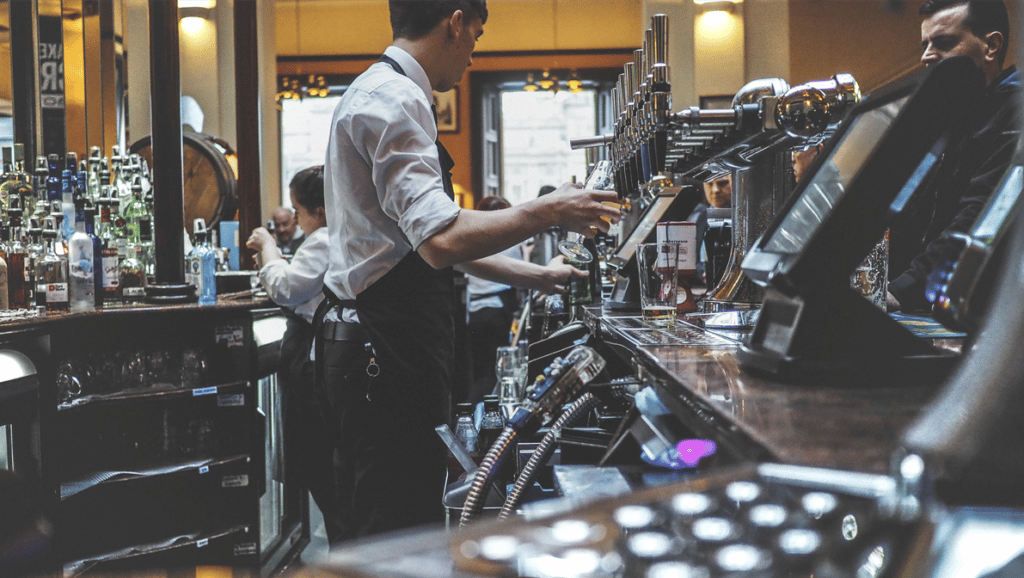This article was written by Serena Greer, Customer Enablement Manager at Compeat, for Hospitality Technology.
If you feel that you are losing money or inventory and cannot figure out why, theft could be the issue. According to the US Chamber of Commerce, 75% of all employees will steal from their employer at least once. It’s a crime that is costing U.S. businesses $50 billion annually, according to Statistic Brain. And it doesn’t just happen to the big guys, according to a 2017 study on white-collar crime by the U.S. insurance company Hiscox, the majority of embezzlement (55%) occurs at companies with fewer than 100 employees.
Even more concerning to our specific industry is that employee theft can be linked to up to 4% of restaurant sales per year. Below a few simple best practices that you can use to monitor your restaurant and deter theft at the point of sale (POS) system.
1. Lock down your POS.
Don’t allow employees to transfer checks, or to apply comps, promos, or voids without manager assistance. Culpability for items rung in decreases the likelihood of comp, void, and promo abuse.
2. Provide manager POS cards.
Rather than allowing managers to login to the POS using a pin number, require an identification card for login so that employees can’t simply memorize the manager number and avoid asking for assistance. Furthermore, ensure that all manager cards are assigned and utilized correctly.
3. Define time frames.
Institute a policy of applying comps, promos and voids to the check before the guests close out, rather than splitting the items off to comp later. Don’t allow employees to save all of their comps, voids and promos until the end of the night, when there is no longer a way for them to prove that Table 31 sent back their chicken salad.
4. Create individual accountability.
Having employees share a handful of generic log-ins makes it nearly impossible to track user activity, which is key to identifying the source of fraud. Hold each employee responsible for their POS activity by having individual logins, rather than generic logins such as “BAR,” “TOGO,” or “CASHIER.”
5. No ticket, no service.
Have a floor manager spot-check tables and the bar throughout the shift, to ensure that all self-service items are rung in before going out to tables. Similarly, never allow items to leave the bar or kitchen without the item being rung in through the POS.
6. Be a data detective.
You can learn a lot by studying outliers in your POS reports. Most employees fall into a pattern of similar behavior, so individuals who have a high variance from these averages will stick out. When looking at your reports, take note of employees who consistently have higher than average cash sales, comps/voids, promos, and even overtime. Most POS systems allow you to set thresholds to what you consider “normal” activity for your restaurant and then alert you when those thresholds are crossed.
7. Install security cameras.
If you have the funds for it, placing security cameras by cash drawers is an easy way to deter employees from stealing cash. Placing them by the back door also makes it harder for employees to remove food from the building without going undetected. Cameras with motion sensors are extremely helpful because it cuts down on the amount of footage you have to review in order to determine if any unusual activity has occurred.
8. Watch for time thieves.
Another less obvious way for employees to steal is by manipulating the time clock. The most common tactic is for employees to leave their shift without clocking out and have a coworker clock them out at a later time. When several employees are involved, labor costs can add up quickly. Be sure to set up the enforcement tools within your POS system to not let employees clock in or out beyond a predetermined amount of time before or after their shift without manager approval.
9. Train your managers.
Lastly, the best thing you can do to deter employee theft is to have a trustworthy manager on the floor, monitoring the day-to-day activities. The more the manager is on the floor and involved in service and inventory, the less likely you are to experience theft. Also, be sure they leave detailed accounts of each shift in the manager log. You will need to be sure that something is really going on before accusing an employee of theft. Without accurate accounts of suspicious behavior logged over time, certain behaviors could be explained away. With the possibilities of potential civil action, you will need hard proof before taking action.
10. Rely on technology.
Restaurants who are financially capable should consider using a cash deposit machine. This will allow employees to cash out each night by depositing cash into a machine and then turning in the receipt to the manager. A manager has the capability to take discounts off checks after the server has already left the building and pocket that cash. A cash deposit machine can increase cash counting accuracy, streamline the server check out process, and reduce the risk of manager fraud.


